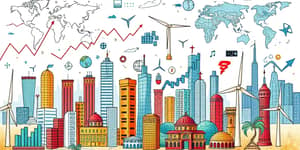
In an era where technology evolves at breakneck speed, organizations and individuals alike stand at the brink of a transformative journey. The convergence of artificial intelligence, immersive reality, advanced connectivity, and sustainable innovation is not merely an academic concept—it represents a tangible pathway to unprecedented growth. By exploring these emerging frontiers, readers can unlock a wealth of possibilities that shape industries, enrich experiences, and redefine the boundaries of human achievement.
The landscape of innovation in 2025 and beyond demands both vision and pragmatism. With investments surging and applications proliferating, it is vital to identify areas where strategic adoption yields maximum impact. This article delves deep into the core technologies, industry use cases, challenges, and future strategies that will empower you to navigate new frontiers and seize the myriad opportunities on the horizon.
The past decade has witnessed an unprecedented pace of innovation across multiple domains. At the heart of this transformation lie several foundational technologies that act as catalysts for change. Understanding their individual strengths and synergistic potential is key to crafting forward-thinking strategies.
While core technologies provide the foundation, tangible value emerges through targeted applications across industries. By aligning innovation with sector-specific needs, organizations can deliver powerful outcomes and unlock new revenue streams.
Despite the vast promise, the journey toward widespread adoption is fraught with obstacles. Integration with legacy systems remains a costly and time-consuming endeavor for many organizations. Overcoming these hurdles requires robust planning and collaboration across technical and business teams.
As data volumes surge, concerns over privacy, security, and algorithmic bias intensify. Implementing robust governance and privacy protocols is essential to building trust with customers and regulators. Equally important is cultivating a skilled workforce capable of harnessing new tools and methodologies.
Environmental considerations add another layer of complexity. AI data centers may soon rival the energy consumption of mid-sized countries, which underscores the need for sustainability-centered innovation in hardware design, cooling systems, and power management.
Concrete data points illuminate the scale of change underway and guide strategic investment decisions. The following table highlights key projections and performance metrics for leading technologies in 2025.
To thrive in this dynamic environment, organizations must embrace both technological innovation and human-centric design. Democratizing access through low-code platforms and affordable hardware will help in bridging accessibility gaps for all, enabling diverse participation in the innovation economy.
Next-generation interfaces—spanning spatial computing, voice control, and brain-computer links—will redefine how humans interact with machines. Cultivating a culture of continuous learning ensures that workforces stay ahead of the curve, mastering new skills and methodologies.
Ultimately, the most successful entities will fuse cutting-edge technologies with climate-positive practices, positioning sustainability as a competitive advantage. By aligning innovation goals with environmental and social responsibility, businesses can unlock resilient growth and lasting impact.
As you chart your course into emerging tech frontiers, remember that each advance holds the potential to reshape markets, revolutionize experiences, and uplift communities. Armed with data-driven insights, strategic partnerships, and a commitment to responsible innovation, you can navigate these new horizons with confidence and purpose.
References













